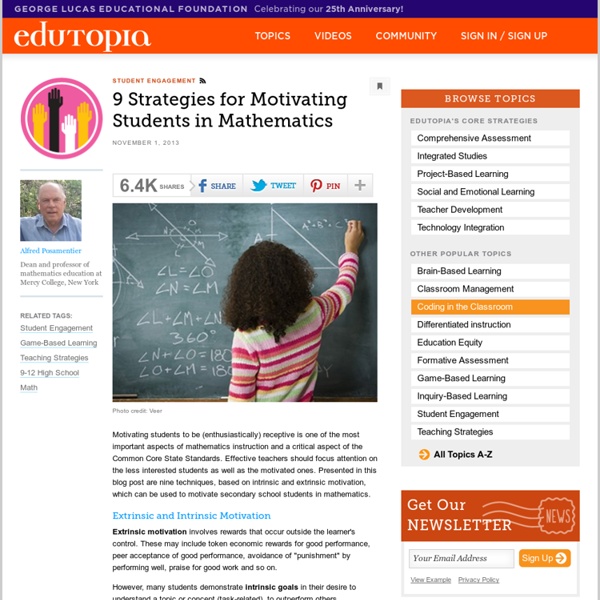9 Strategies for Motivating Students in Mathematics

Fun with the Impossible Penrose Triangle
I found this delightful animation today: The ball is traveling around a shape that can’t exist in our real world: the Penrose triangle. This illusion is the basis for some cool art, like Escher’s Waterfall. And I’m using it in my Math You Can Play books as a design on the back of my playing cards: Want to Play Around with the Penrose Triangle? Here’s a few links so you can try it for yourself: Penrose Lego by Erik Johansson (CC BY 2.0) Book Update I’ve sent the first two Math You Can Play books to a copy editor (she edits the text part), so my focus this month is on finishing the illustrations and downloadable game boards. If everything stays on schedule, both Counting & Number Bonds and Addition & Subtraction should be available by mid- to late-spring. Get monthly math tips and activity ideas, and be the first to hear about new books, revisions, and sales or other promotions. Like this: Like Loading...
Holstee Manifesto Poster Letterpress Print grande
The Three Acts Of A Mathematical Story
2016 Aug 6. Here is video of this task structure implemented with elementary students. 2013 May 14. Here’s a brief series on how to teach with three-act math tasks. It includes video. 2013 Apr 12. Storytelling gives us a framework for certain mathematical tasks that is both prescriptive enough to be useful and flexible enough to be usable. Act One Introduce the central conflict of your story/task clearly, visually, viscerally, using as few words as possible. With Jaws your first act looks something like this: The visual is clear. With math, your first act looks something like this: The visual is clear. Leave no one out of your first act. Act Two The protagonist/student overcomes obstacles, looks for resources, and develops new tools. Before he resolves his largest conflict, Luke Skywalker resolves a lot of smaller ones — find a pilot, find a ship, find the princess, get the Death Star plans back to the Rebellion, etc. So it is with your second act. What tools do they have already? Act Three
KenKen Puzzle Official Site - Free Math Puzzles That Make You Smarter!
motivated people
John Venn's 180th Birthday
John Venn was a logician and philosopher best known for introducing the Venn diagram. In the diagram, circles are used to visually and logically sort groups to illustrate their relationships to each other. For example, one circle may contain things that are mammals. The other circle may contain things that have wings. With a concept this simple, you would think it was all fun and games to design an interactive doodle for John Venn’s 180th birthday. How did the idea develop? Venn diagrams in general are naturally pretty fun. Early sketches played with a wide range of categories Eventually, I sat down with two of the doodle engineers, Corrie Scalisi (the engineer of this doodle) and Mark Ivey. Figuring out what kinds of things could work as complete sets that could then be mixed and matched to still create logically correct Venn diagrams was trickier yet! This looks more like a kid's game than usual doodles. To make sure we were on the right track we conducted user tests.
Crunchzilla
10363792 10155275128880430 8393469018083462220 n
An Update to the Upgraded KWL for the 21st Century
In 2011, I wrote a blog post, titled Upgrade your KWL Chart to the 21st Century. It described how I learned about a new version of the traditional KWL (What do I Know, What do I Want to know and what have I Learned) via Chic Foote as it snuck in an “H“(How will I find out). That “H” seemed to make the increased importance of the information literacy visible. I ended up on Maggie Hos-McGrane’s blog, which, according to John Barell’s book Why are School Buses always Yellow? Interested in learning even more about Upgrading the KWL chart to the 21st Century? The blog post included the visual chart below, which seemed to have made it the most popular blog post searched for and shared on Langwitches of all times. I have used the chart consistently over the last few years as a framework to upgrade FOR the 21st century in lesson planning, professional development workshops, coaching and working directly with students and teachers. What do you think?
Home Page
Teachers Primary Pupils Secondary Students Events and PD "It gave me some good ideas to use in the classroom and ... a link that I can get all of the activities from." Book NRICH Bespoke PDBook Forthcoming EventsBook our Hands-on Roadshow Your Solutions
untitled
Related:
Related:



